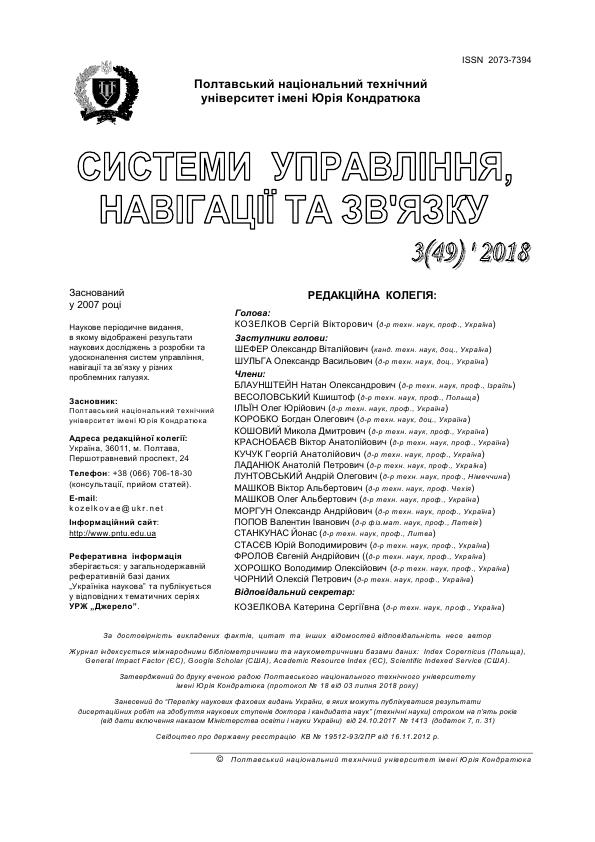COLLABORATIVE FILTERING FOR IMPLICIT FEEDBACK DATASETS USING RANKING NEGATIVE DATA
DOI:
https://doi.org/10.26906/SUNZ.2018.3.073Keywords:
collaborative filtering, machine learning, ranging, factorization of matrices, error curve, training and test samplesAbstract
The subject matter of the article is the processes of revealing the preferences of users in recommender systems. The goal is to develop an improved method of collaborative filtering based on the ranking of missed and negative results in the matrix of input data. Tasks: Formalize the properties of the source data, including missing data for the collaborative filtering task; develop an approach to the ranking of input data for collaborative filtering with implicit feedback, including missed and negative results; improve the method of collaborative filtering by pre-ranking the missed and negative results in the original data. The methods used are: collaborative filtering, machine learning. The following results were obtained. The properties of the initial data are formalized. Such data is arranged for each user as a sequence of preferences of objects of interest to the user. Based on the properties of the source data, it is shown that with collaborative filtering with implicit feedback, it is necessary to organize not only data about the user's behavior, but also missed and inaccurate data. An approach to the ordering of such data is proposed on the basis of their pairwise comparison. The method of collaborative filtering is improved on the basis of refinement of weight coefficients for the training sample, taking into account the preliminary ranking of the input data. Conclusions. The scientific novelty of the results obtained is as follows: the method of collaborative filtering with implicit feedback has been improved by assigning additional weights to the elements in the matrix of the initial data based on the ranking of the missed and negative results. The method allows to increase the accuracy of the AUC criteria taking into account the incompleteness of the initial data.Downloads
References
Adomavicius G. and Tuzhilin A. (2005), “Towards the Next Generation of Recommender Systems” A Survey of the State-ofthe-Art and Possible Extensions, IEEE Transactions on Knowledge and Data Engineering, No. 17, pp. 634–749.
Ekstrand, M.D., Riedl J.T., and Konstan J.A. (2011), “Collaborative filtering recommender systems”, Foundations and Trends in Human-Computer Interaction No. 4(2) , pp. 81–173.
Herlocker J.L., Konstan J.A., Terveen L.G. and Riedl J.T. (2004), “Evaluating collaborative filtering recommender systems” ACM Transactions on Information Systems (TOIS) 22, 1, pp. 5–53.
Guo G., Zhang J. and Yorke-Smith N. (2015), “TrustSVD: Collaborative Filtering with Both the Explicit and Implicit Influence of User Trust and of Item Ratings” AAAI, pp. 123–129. Системи управління, навігації та зв'язку, 2018, випуск 3(49) ISSN 2073-7394 77
Bennet J. and Lanning S. (2007) “The Netflix Prize”, Proceedings of KDD cup and workshop, available at : http://www.netflixprize.com. (last accessed March 22, 2018).
Hu Y., Koren Y. and Volinsky C. (2008), “Collaborative filtering for implicit feedback datasets”, Data Mining, ICDM’08. Eighth IEEE International Conference on. IEEE, pp. 263–272.
Pan R., Zhou Y., Cao B., Liu N. N., Lukose R. M., Scholz M., and Yang Q. (2008), ‘One-class collaborative filtering”, IEEE International Conference on Data Mining, pp. 502-511.
Linden G., Smith B. and York J. (2003), “Amazon.com recommendations: Item-to-item collaborative filtering”, Internet Computing, IEEE 7, 1, pp. 76–80.
Yi Fang and Luo Si. (2011), “Matrix co-factorization for recommendation with rich side information and implicit feedback” Proceedings of the 2nd International Workshop on Information Heterogeneity and Fusion in Recommender Systems. ACM, pp. 65–69.
Yehuda Koren, Robert Bell, and Chris Volinsky. (2009), “Matrix factorization techniques for recommender systems”, Computer No.8, pp. 30–37.




